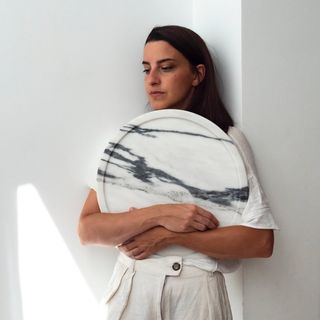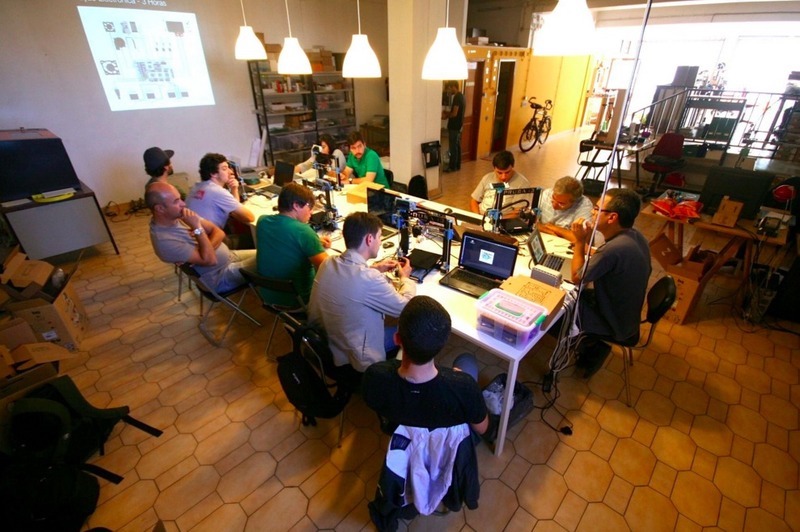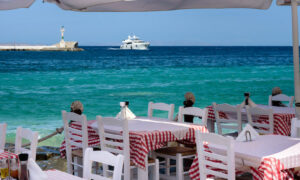(Editor’s note: This post about Makers in Little Lisbon is part of our Tech Tuesday series. Dispatches Europe tracks the tech scene – startups, scale-ups and mature companies – across Europe because so many of our highly skilled internationals are engineers, physicists and developers. )
Lisbon is rapidly developing a reputation as a European destination for the technology sector, which extends beyond start-ups and crypto to more creative, artistic and unusual technological efforts.
Read on to find out about one of the most important community hubs in the city for the creative technology scene:

In a large workshop on Avenida da Liberdade, full of interesting objects and machines and the remains or beginnings of various electronic devices scattered on the tables around us, I am handed a carved hardwood ball, inlaid with an optical lens. Inside is a 10 cent coin, magnified to more than twice its regular size.
“This is a bowl for serving caviar,” explains product designer Sara Bozzini, the lens magnifying the fish eggs to display them in a more spectacular fashion.
Bozzini has a shelf laden with prototypes of eating devices – a marble plate that lights up when it’s placed on the table, illuminating the food from below; a hefty block of wax with a crevice carved in its side designed to be filled with food and picked up and licked out by a diner (the wax is just the sculpting material for a final ceramic version), and a series of bowls made by crushing metal pipes in a hydraulic press.
Sara is an industrial product designer from Italy who specialises in designing bespoke tableware for high-end chefs. She has lived for a number of years in Lisbon, and works out of Makers in Little Lisbon (MILL), a maker space for Lisbon’s creative technology community.
MILL was set up by Mauricio Martins, a Brazilian who has lived in Lisbon for three decades. He moved originally to Portugal to work in technology companies as a technician, before becoming involved in the hacker space movement. A self-described “tinkerer,” Martins was involved in setting up the first, and still existing, hacker space in Portugal, OutLab, and organising workshops in digital fabrication techniques.
Eventually, he decided to set up his own space: “I wanted to do more than just workshops … to have more of a collective.”

The MILL has been an invaluable resource for the creative technology community in Lisbon; the space provides access to a wealth of resources and equipment, but perhaps of more value is the access to expertise across many different fields.
Rob Allison is a British artist who bases himself out of MILL, specialising in abstract generative video art. Rob praises MILL as “great for physical projects. We have all the tools like 3D printers and a laser cutter, so I made some great physical products that I wouldn’t have been able to make otherwise. The electronics stuff we have here is great, and also the other people from MILL who have expertise in different things, from electronics to design to art to physical making.”
“It’s inspiring to be around people making stuff, seeing what they are up to.” Rob Allison
Sara Bozzini’s background in product design didn’t include a great deal of coding or technological expertise, but some of her projects required interactive elements, such as the self-illuminating plate and a breath-activated lamp. So she worked with Tiago Rorke, another key member of the MILL community, to help to realise them. “I’m super fond of MILL because you enter in a space without knowing things, but there are people around you working on other projects and other materials and other things, so you share and you compensate,” Sara says.
Tiago is a New Zealander who has lived in Lisbon for eight years. “I studied product design but I was always more interested in the prototyping and making, working with technology and learning how things work, maybe more so than traditional product design,” he says. While studying, Tiago was helping other students and even teachers prototype their work, “particularly electronics and programming and ever since then, I’ve been doing my own projects but primarily helping people with their projects—be it design or mechanics or programming – basically anything related to taking ideas and making them real.”
Tiago particularly values the role MILL plays as part of the creative technology community in
Lisbon:
Probably the most fun thing here have been the events – before COVID we had a regular tech-art meetup, open labs, presentations, exhibitions – which often led to the most interesting projects. Through completely random encounters in the place, someone will have an idea then and there and you decide to make it happen. That’s what really shows you that a community is alive. When people don’t just get together but they make stuff happen when they get together. One of the last events I was more heavily involved with before the pandemic was called Privacy Café, a public gathering to get people involved in the basics of cyber security and privacy online, looking at why that’s important – looking at the tech side and the political side – and making connections with groups working in the area.
For a small city, Lisbon has a strong creative technology community, which was one of the things that attracted Rob Allison to move to the city. He became involved with MILL through a project called Temp Studios, where a group of artists would get together and form a temporary studio to work on their projects, which led to other collaborations, such as “Up At Mill, a monthly exhibition that turned the maker space into an exhibition room.
“Each exhibition we’d invite an artist to take over the space and do what they wanted to do,” Rob said.
Why is Lisbon a good place for creative technologists, artists and designers to base themselves?
Rob cites the low cost of living. “Lisbon feels like a place that supports people in general, you don’t need to struggle to survive like in America or London” as well as a “rich tradition of creativity in Lisbon, and Portugal in general”.
For creative technologists and artists looking for a new place to live and work, Lisbon and MILL offer a lot of exciting opportunities; and for those already in the city, keep an eye out for unusual sights and sounds around Jardim do Torel; you never know what new skills you might pick up or interesting artworks you might make.
Craig is a Scottish designer, researcher and traveller living in Portugal, where he is working on a PhD in Speculative Design alongside being the creative director of Unreal Cities, a creative space in Barreiro, in the South Bay of Lisbon.















